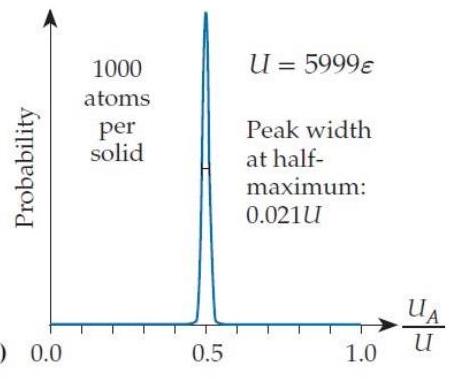In the situation shown in figure T2.5c, the width of the bell curve at half its peak value is . If we multiply , , and by a factor of 100 , then the peak's width (as you can check) is about . Suppose that we increase each solid's and the system's total energy by another factor of to create solids containing of a mole of atoms (still pretty small objects by everyday standards) . Assuming that the trend continues, what will be the approximate width of the combined system's probability bell curve as a fraction of ?
A)
(c) 0.0
B)
Figure T2.5
C)
D)
E)
F)
. Some other factor (specify) .
Correct Answer:
Verified
Q3: Consider a system consisting of two
Q4: What is the crucial characteristic of
Q5: We can ignore an Einstein solid's zero-point
Q6: Which of the following statements is true?
A)
Q7: Suppose that we increase an
Q9: Suppose that you use a super-fast
Q10: Consider the system where
Q11: Which of the systems listed below
Q12: A hot object is placed in
Q13: Consider an object (object
Unlock this Answer For Free Now!
View this answer and more for free by performing one of the following actions

Scan the QR code to install the App and get 2 free unlocks

Unlock quizzes for free by uploading documents